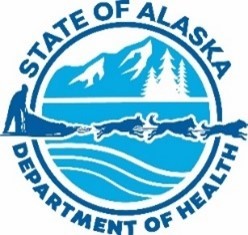DOH & AHD Press Release: Alaska reports first case of monkeypox
Alaska Department of Health sent this bulletin at 07/29/2022 09:45 AM AKDT
FOR IMMEDIATE RELEASE
Contact: Elizabeth Manning, DOH, 907-269-4541, elizabeth.manning@alaska.gov
Tyler Sachtleben, AHD, 907-343-4670, tyler.sachtleben@anchorageak.gov
Alaska reports first case of monkeypox
July 29, 2022, ANCHORAGE – The Alaska Department of Health (DOH) and the Anchorage Health Department (AHD) today announced the first case of monkeypox in Alaska. The person, an Anchorage resident, did not require hospitalization and is isolating at home.
The individual had not traveled but was a close contact of an individual who had recently traveled outside of Alaska.
The Alaska Section of Epidemiology is continuing to work to identify people who may have been exposed to monkeypox in Alaska. Any close contacts will be notified and offered vaccine. People with close contact exposure to monkeypox are generally advised to reach out to their clinician or public health center for evaluation. Testing for monkeypox is available in Alaska, as is a limited supply of the JYNNEOS vaccine.
Vaccine is prioritized for people who have been identified as having close contact to someone with monkeypox within the last two weeks. Currently, vaccination to prevent monkeypox is not recommended for the general public.
Monkeypox does not spread easily between people. Transmission is possible either through skin-to-skin contact with body fluids or monkeypox sores, through direct contact with contaminated items such as bedding or clothing, and through exposure to respiratory droplets during prolonged face-to-face contact. While anyone can get or spread monkeypox, in the current outbreak in the United States, most cases have occurred among gay, bisexual, and other men who have sex with men.
“While the risk of monkeypox infection remains low for the general population, it is important for people who might be at increased risk for exposure to be aware of how to prevent transmission and what signs and symptoms to look for,” said Dr. Joe McLaughlin, state epidemiologist and chief of the Section of Epidemiology.
Monkeypox symptoms typically start with flu-like symptoms including fever, headache, chills, muscle aches and exhaustion within 1 to 2 weeks of exposure. The rash appears soon after. Some may only develop the rash. People infected with monkeypox are typically sick for 2-4 weeks.
“The best thing folks can do if they’re experiencing monkeypox symptoms or come across a new, unexplained rash is to stay home and contact their health provider right away,” said Dr. Brian Piltz, medical officer at the Anchorage Health Department. “This will allow us to deliver prompt treatment and rapid identification of close contacts who may be eligible for vaccination.”
To prevent the spread of monkeypox, avoid close contact with people who have recently been diagnosed with monkeypox or with people who have monkeypox symptoms such as a characteristic rash. If you are in close contact with someone who has symptoms, for example if you live with someone who has monkeypox, wear a face mask, limit skin-to-skin contact and wash your hands with soap and water or use hand sanitizer.
As of July 28, confirmed monkeypox cases have been reported in 46 other states, plus Puerto Rico and the District of Columbia, according to the Centers for Disease Control and Prevention (CDC).
More resources:
- DOH: Monkeypox Website
- CDC: U.S. Monkeypox Outbreak 2022: Situation Summary
- CDC: Monkeypox Signs and Symptoms
- CDC: Monkeypox Prevention
- CDC:Considerations for Monkeypox Vaccination
# # #


